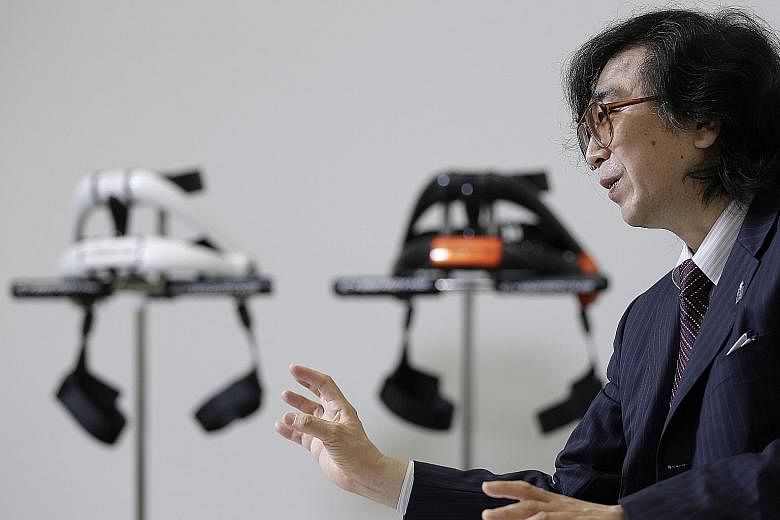TOKYO • In the Tokyo suburb of Tsukuba, Dr Yoshiyuki Sankai pointed excitedly to a slide of severed spinal cords that belonged to rats. He had used cell technology to help reconnect the nerves.
Dr Sankai, 57, a multimillionaire scientist whose robot company Cyberdyne went public last year, is researching ways to repair damaged body tissue.
His vision: to treat patients with spinal injuries by using stem cell-related technology to repair nerve connections and robotic suits that aid movement.
His plans are getting a boost from new policies promoted by Prime Minister Shinzo Abe, who led a liberalisation of approval rules to make Japan one of the world's quickest places to get a regenerative therapy on the market.
Now, Japanese corporations spanning the pharmaceutical and industrial sectors have regenerative medicine on their agenda.
Industry groups estimate the domestic market for these therapies could top US$25 billion (S$35.4 billion) by 2050.
While scientists globally have worked for years in this field, treatments have been slow to come to the market. But there's hope in Japan that without the political red tape, promising therapies will emerge faster and there will be speedier payouts.
"It's a game changer, and we expect investment to keep pouring into Japan," said Mr Sanjeev Kumar, a consultant at market research firm Frost and Sullivan.
Regenerative medicine is a broad umbrella that includes treatments around stem cells and gene therapy intended to restore the function of damaged organs and tissues.
Dr Sankai's company is setting its sights on better treating spinal injury patients by combining multiple approaches.
It makes robot exoskeletons for physical therapy, and these bionic suits can read bio-electric signals from the patient's muscles, helping movement in the disabled.
Inspired by author Isaac Asimov's I, Robot stories as a child, Dr Sankai says his years of mapping out the brain's nerve network for his robots fits in with the research into repairing rat spines with stem cells and proteins. His hope is to eventually use various treatments together.
Faced with an ageing population, Mr Abe is seeking to foster technologies that could create new treatments for patients while potentially providing a boost to Japan Inc.
The idea is to have new industries wean the world's third-biggest economy away from its dependence on the auto industry.
Regenerative medicines in Japan can now get conditional marketing approval based on results from mid-stage, or Phase II, human trials that demonstrate safety and probable efficacy. Once lagging behind the United States and the European Union on approval times, there is now an approximately three-year trajectory for approvals, according to Mr Kumar, compared with seven to 10 years before.
While the market potential is huge, technological challenges still need to be ironed out, said Mr Atsushi Seki, a healthcare analyst with Barclays. Therapies that use the patient's own cells could be tougher to monetise and researchers will also need to find ways to handle transplants rejected by the body, he said. The price of such therapies is another hurdle. But researchers like Dr Sankai are hopeful.
"The speed of development is amazing. Every day, it's going faster," he said. "But technology is only technology. What's important is how they're installed in the people."
BLOOMBERG

